Nakayama is in between Narita And Haneda International Airport
<クッキーについての同意並び欧州居住者向けプライバシーポリシー>
中山・下総・散歩道
A Walk on the Places Described by Kafu Nagai
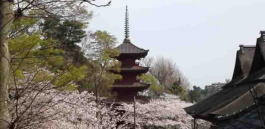
Soon after the WWII had ended, Kafu Nagai moved to Sugano in Ichikawa city in January 1946, and he described some landmarks around Yawata and Nakayama area in the city several times in his diary named Danchotei Nichijo. Kafu visited Nakayama Hokekyoji Temple, Shirahata Tenjinsha Shrine, Katsushika Hachimangu Shrine, Kaguraden Hall, Yawata no Yabushirazu Shrine, Mamasan Guhoji Temple, and Myogyoji Temple and he specifically wrote them. Shirahata Tenjinsha Shrine near his house and Nakayama Hokekyoji Temple were especially described in many pages, Kafu might visited them several times. And also he visited other places in the city. For example, Kafu wrote in his diary that he left his umbrella in Shimousa Nakayama Station, and some old people talked that they saw him walking along Mamagawa River with his umbrella.
On this page, some wonderful noted spots where Kafu Nagai described in his diary called Danchotei Nichijo would be introduced. It is very good for you to visit them in each part, Mama, Yawata, Nakayama and Baraki. You could see excitingly beautiful seasonal sights when you visit them.
Why don't you visit the places described on the diary called Danchotei Nichijo written by Kafu Nagai?
Kafu Nagai (1879~1952)
Kafu Nagai was a novelist born in Tokyo and died at Icikawa city. His name was Sokichi, another pseudonym was the owner of Danchotei, therefore his diary entitled 'Danchotei Nichijo'.He dropped out Tokyo-Kosho Huzoku-Gakko (the Hitotsubashi University and Tokyo University Of Foreign Study), and he studied under Ryuro Hirotsu. He had got influenced by the French novelist Emile Zola, he published 'Jigoku-no-hana' (1902; the flowers in hell) to attempt introducing Zola-ism to Japan.
Kafu went to the United States in 1903, then went to France 1908. After he was back, he won fame by his work 'America Monogatari' (1908; the story of America). Next, he issued 'France Monogatari' (1909; the story of France), 'Fukagawa-no-uta' (the songs of Fukagawa), 'Sumida-gawa' (Sumida river), 'Reisho' (smiling with cold feelings). He played the important role of the anti-naturalism with his unique critics and his esthetic epicurean style of writing. He hated the mere shell of the culture at Tokyo, and 'Taigyaku-jiken' (1910-11) gave him shocked, so he emphasized to turn back to the Edo culture; he wrote 'Udekurabe' (1916-17; the competition) that he drew the life in Karyukai (the world of Geisha), and 'Okame-sasa' (1918). His works 'Tsuki-no-ato-saki' (1931) showed his special to describe the life in common.
During the world war second, he had not worked, but he wrote some stories of 'Fuchin' (rise and fall), 'Odoriko' (the dancer), 'Kunsho' (the decoration) and 'Raihousha' (the visitor) secretly, and he published them. 'Danchotei Nichijo' his diary he wrote since 1942 also published.
Kafu moved to Ichikawa city in 1946. He was awarded Bunka Kunsho (the order of culture) in 1952.
参考
「新版 断腸亭日乗 第六巻」 岩波書店
ブリタニカ国際大百科事典
デジタル大辞林
The Noted Places on the Diary Written by Nagai Kafu
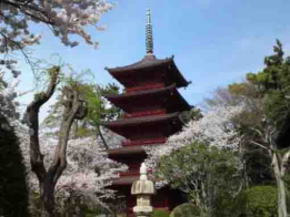
Nakayama Hokekyoji Temple
Kafu Nagai visited it and wrote it on his diary several times.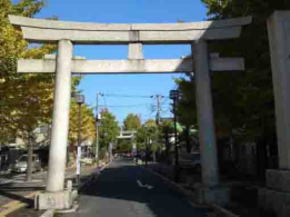
Katsushika Hachimangu Shrine
Kafu Nagai visited it in May 8th and 9th 1946 and wrote it.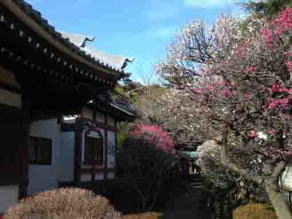
Oku no in of Hokekyoji Temple
Kafu visited it in December 4th of 1946.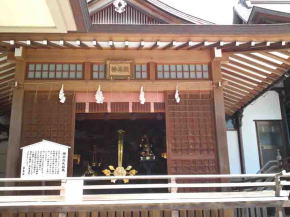
Kaguraden Hall in Katsushika Hachimangu Shrine
Kafu visited it in May 9th, 1946.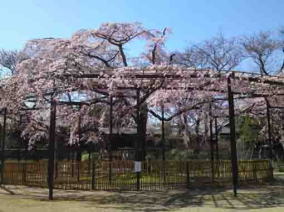
Myogyoji Temple
Kafu visited it in November 30th of 1946 and saw the sculptures on the gate.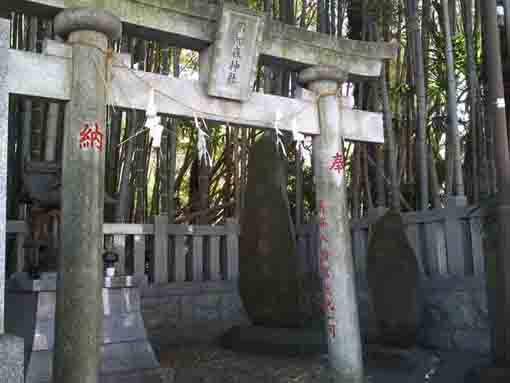
Yawata no Yabushirazu Shrine
Kafu visited this famous shrine in May 8th of 1946 and wrote it on his diary.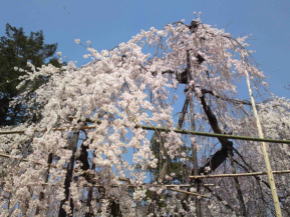
Mamasan Guhoji Temple
Kafu wrote a tanka poem at this temple in spring.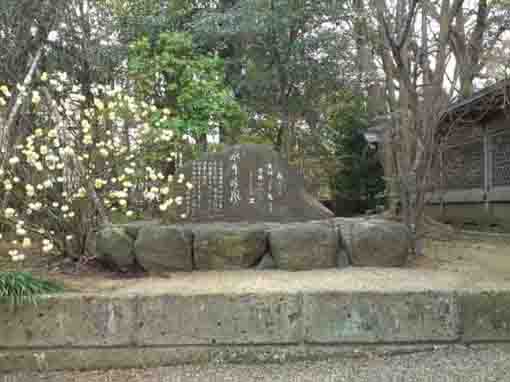
Shirahata Tenjinsha Shrine
A stone tablet inscribed with a sentence from his diary.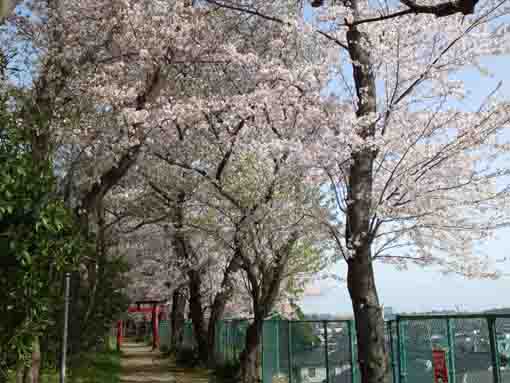
Shirahata Jinja Shrine
The shrine standing on the cliff having some cherry blossoms along its approach.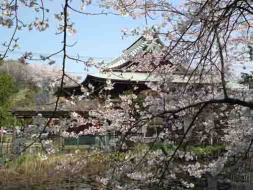
Tekona Reishindo Hall
Tekona is a legendary beauty appeared on Manyoshu and many poets wrote her in their works.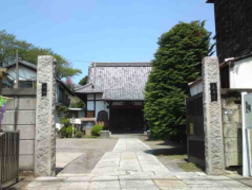
Kameiin Temple
Hakushu Kitahara once lived and the temple has a famouse well named 'Mama no I' in its site.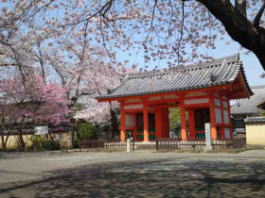
Kokubunsan Kokubunji Temple
This temple standing on the remains of Shimousa Kokubunji Temple built in Nara period.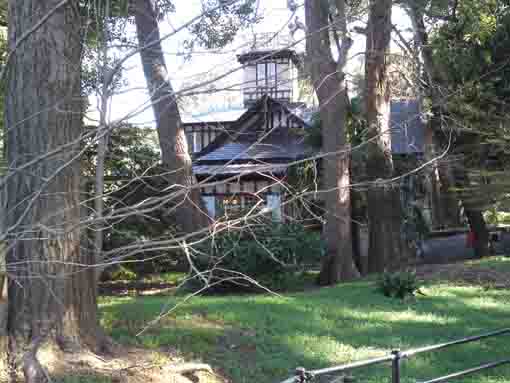
Kiuchi Gallery
Kafu wrote of this old house in March 18th of 1946 in his diary.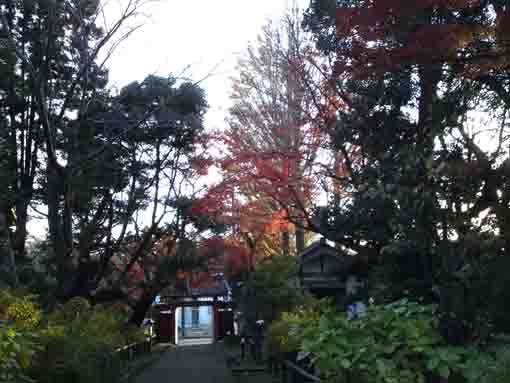
Ekoin Branch Temple in Ichikawa
Kafu wrote of it in September 12th of 1946 in his diary.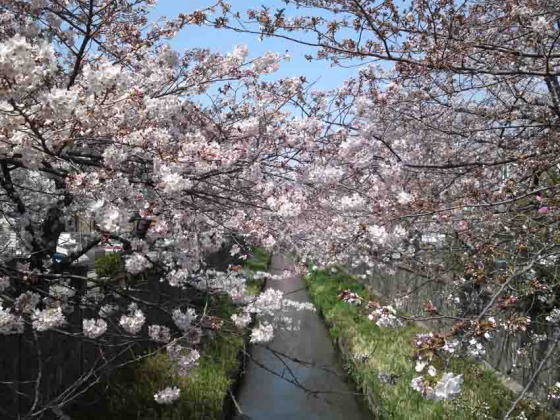
Mamagawa River
Kafu sometimes walked along the river with his umbrella.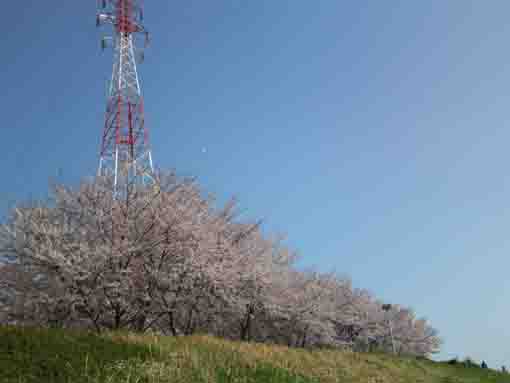
Edogawa River
Kafu often walked on the bank of Edogawa River.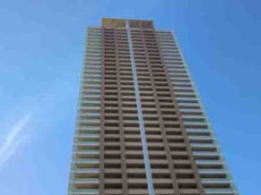
Ichikawa Station
Kafu often ate his dinner at shops near this station.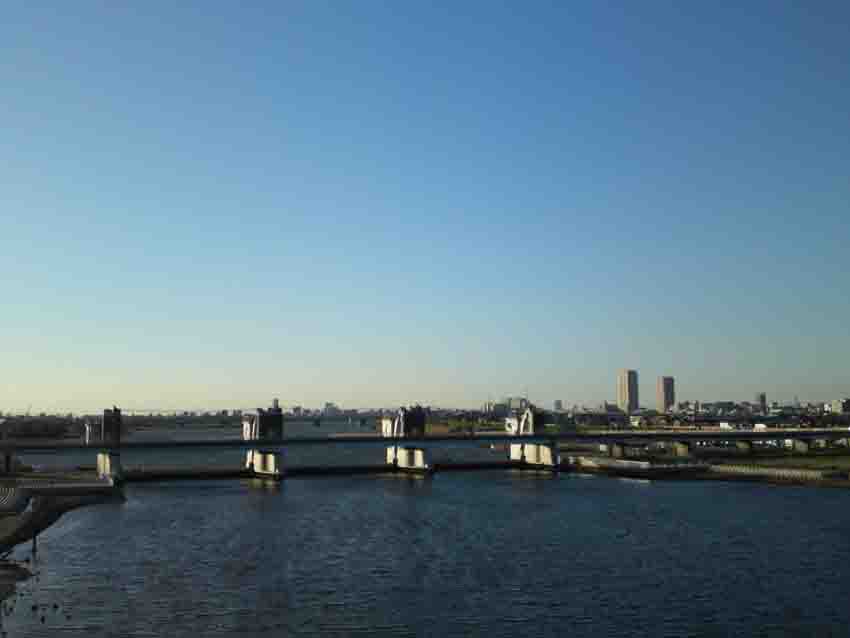
Gyotoku
Kafu went to Gyotoku by bus and described the views of the area.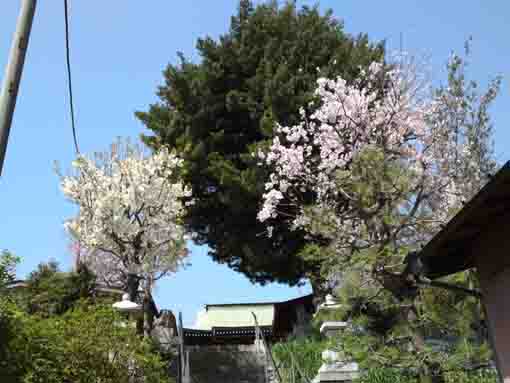
Terauchi Myoken Jinja Shrine
Kafu wrote of this shrine in Febraury 9th of 1946 in his diary.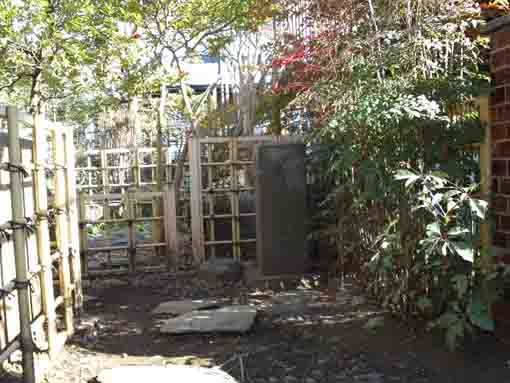
Kazura no I Well
Kafu found and introduced this well in his essay.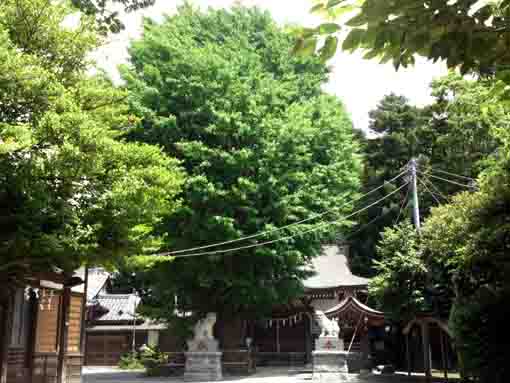
Yasaka Jinja Shrine in Innai
He visited it February 9th of 1947 in his diary.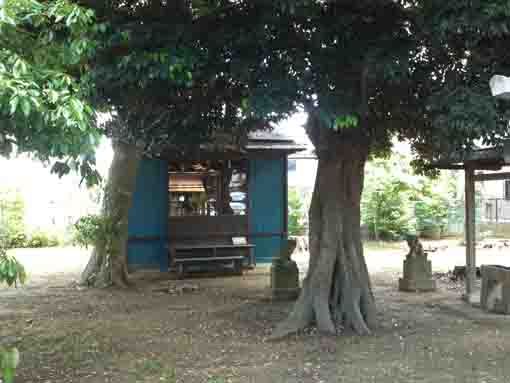
Dairokuten Shrine in Innai
He visited it January 26th of 1947 in his diary.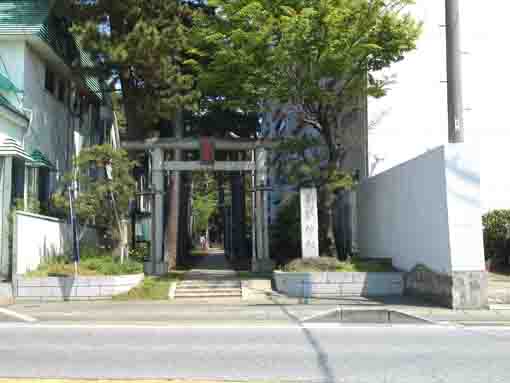
Suwa Jinja Shrine and Hirata Green Zone
He visited it August 3rd of 1946 and this shrine remains the views in his ages.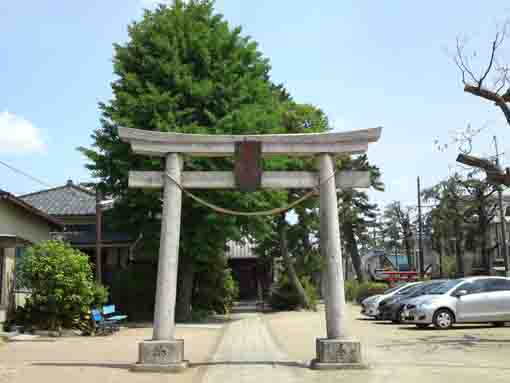
Koroku Jinja Shrine and Black Pine Trees preserved on the path in the residential area in Shinden Ichikawa City.
He visited in October 19th 1947.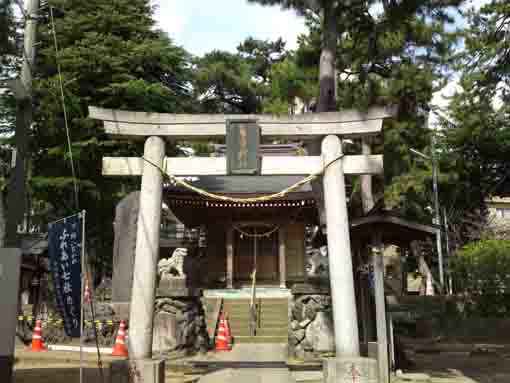
Kasuga Jinja Shrine in Shinden
He was intrested in letters on the flag hung out at its festival.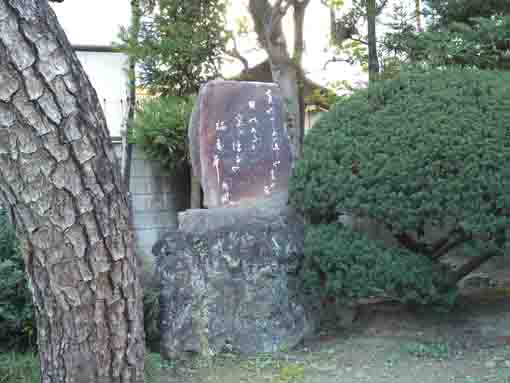
Myohokkesan Senyoji Temple
It has a tanka poem by Kafu scribed on a stone tablet.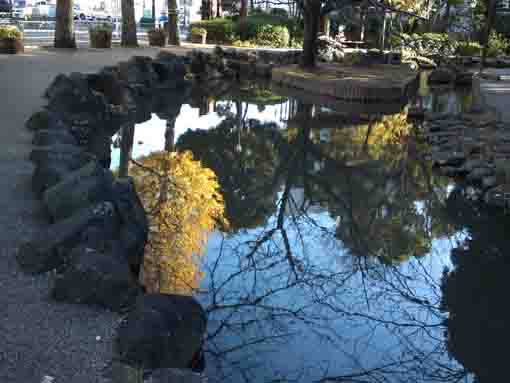
Komatsugawa Sakaigawa Water Park
He often visited the area from 1948 to 1951.The Location of the Places on the Diary Written by Nagai Kafu
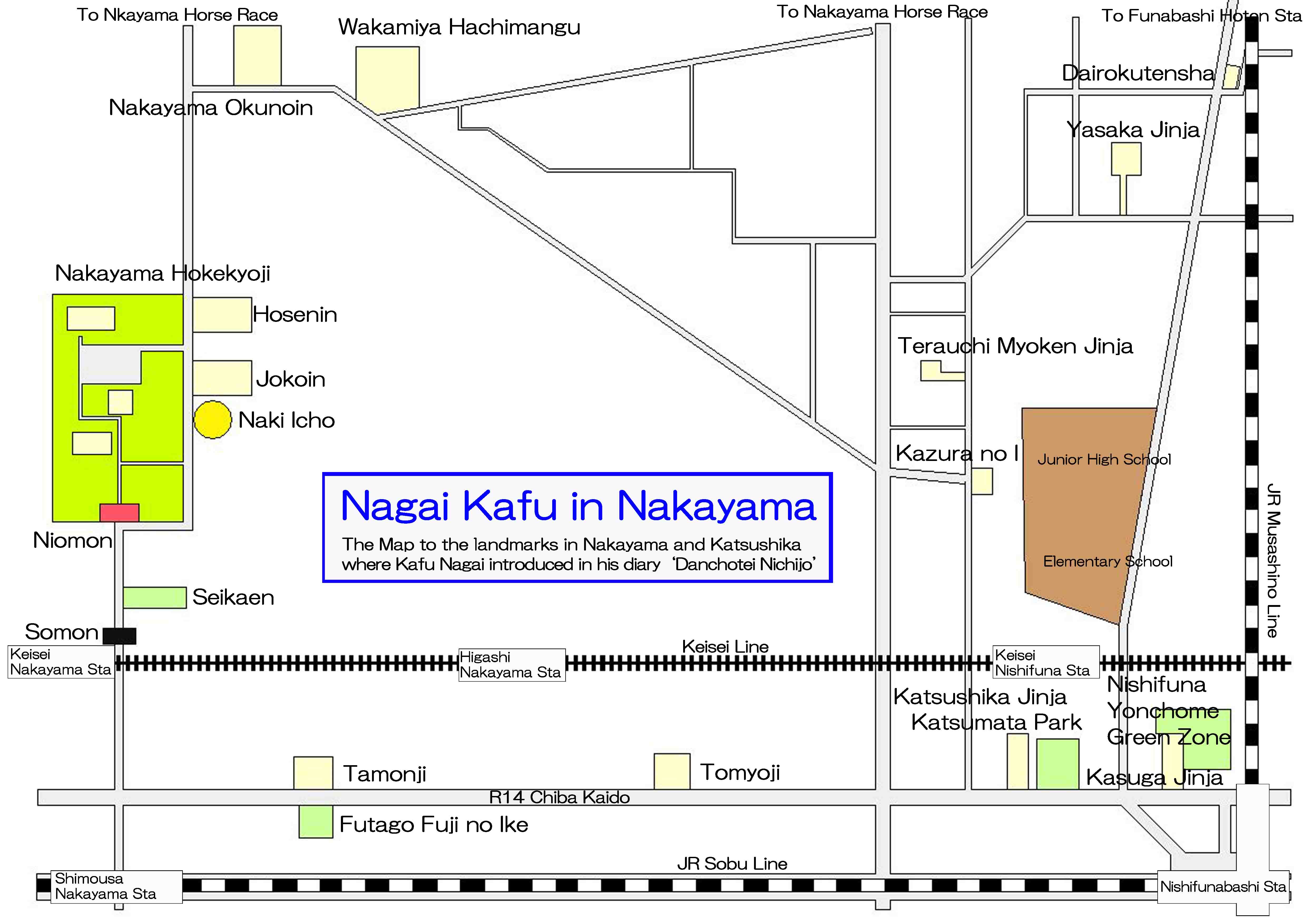
The map to the landmarks where Kafu Nagai introduced in his book
PDF of the map of the noted spots where Kafu Nagai visited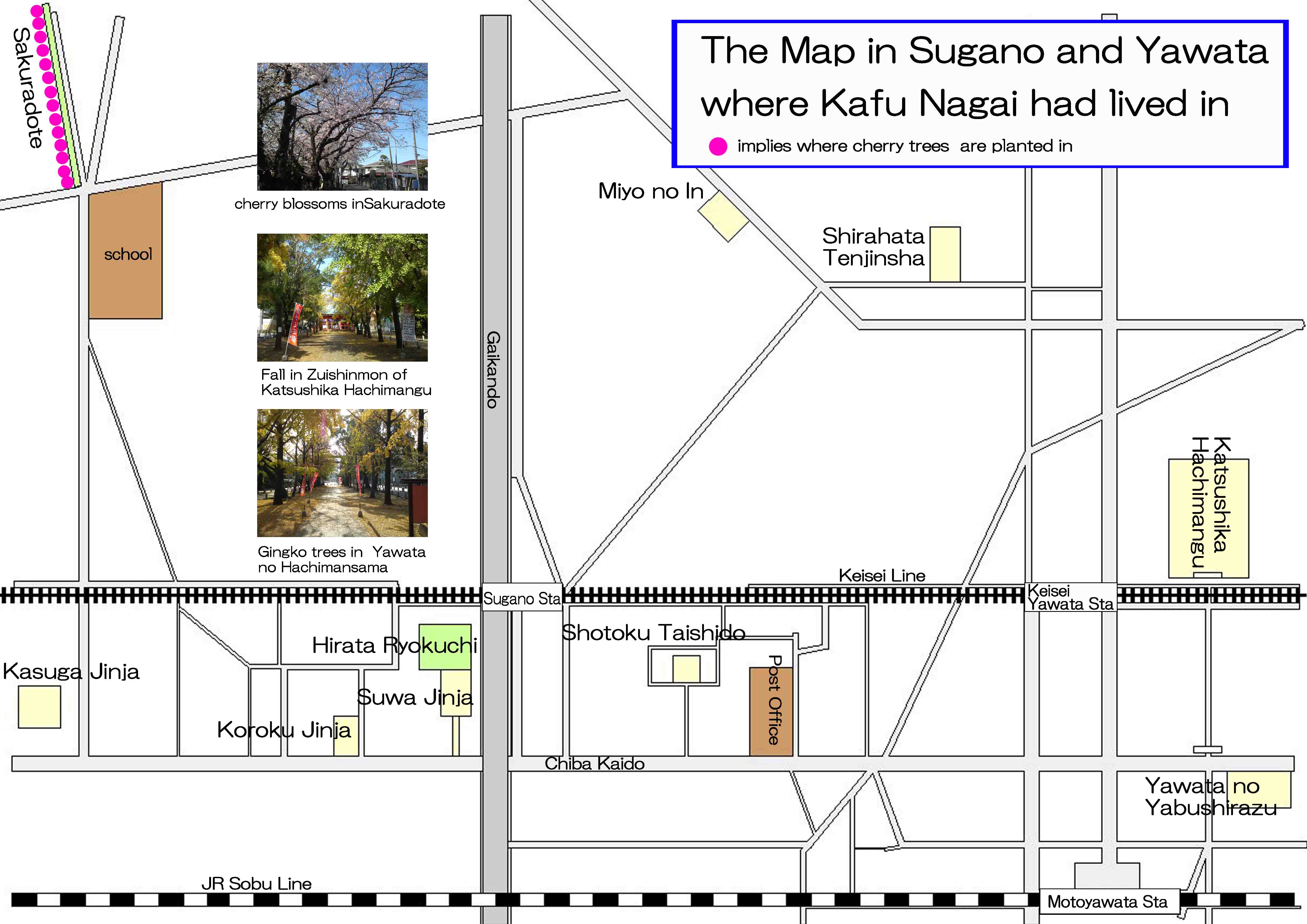
The map in Sugano and Yawata where Kafu Nagai having lived in
The map to the landmarks related to Kafu Nagai in Sugano| Nakayama Hokekyoji Temple | 2-10-1 Nakayama Ichikawa-shi Chiba-ken |
| Katsushika Hachimangu Shrine | 4-2-1 Yawata Ichikawa-shi Chiba-ken |
| Nakayama Okunoin Temple | 2-21-1 Wakamiya Ichikawa-shi Chiba-ken |
| Kaguraden Hall in Katsushika Hachimangu Shrine | 4-2-1 Yawata Ichikawa-shi Chiba-ken (in Katsushika Hachimangu Shrine) |
| Barakisan Myogyoji Temple | 1-24-1 Baraki Ichikawa-shi Chiba-ken |
| Yawata no Yabushirazu | 2-8 Yawata Ichikawa-shi Chiba-ken |
| Suwa Jinja Shrine | 2-26-12 Hirata Ichikawa-shi Chiba-ken |
| Mamasan Guhoji Temple | 4-9-1 Mama Ichikawa-shi Chiba-ken |
| Shirahata Tenjinsha Shrine | 1-15-2 Sugano Ichikwa-shi Chiba-ken |
| Shirahata Jinja Shrine | 4-2-4 Miyakugo Ichikawashi Chiba-ken |
| Tekona Reishindo Hall | 4-5-21 Mama Ichikawa Chiba-ken |
| Kameiin Temple | 4-4-9 Mama Ichikawa Chiba-ken |
| Kokubunsan Kokubunji Temple | 3-20-1 Kokubun Ichikawa Chiba-ken |
| Kiuchi Gallery | 4-11-4 Mama Ichikawa Chiba-ken |
| Ekoin Branch Temple in Ichikawa | 5-26-12 Konodai Ichikawa Chiba-ken |
| Myohokkesan Senyoji Temple | 2-37-15 Kitakoiwa Edogawaku Tokyo |
| Ichikawa Station (I-link Town Ichikawa) | around JR Sobu Line 'Ichikawa Station' |
| Edogawa River | from Keisei Line 'Konodai Station' or JR Sobu Line 'Ichikawa Station' |
| Mamagawa River | from Keisei Line Onigoe Station |
| Gyotoku in Ichikawa | from Tokyo Metro 'Myoden', 'Gyotoku' or 'Minami Gyotoku Station' |
- 広告 Advertisement -
